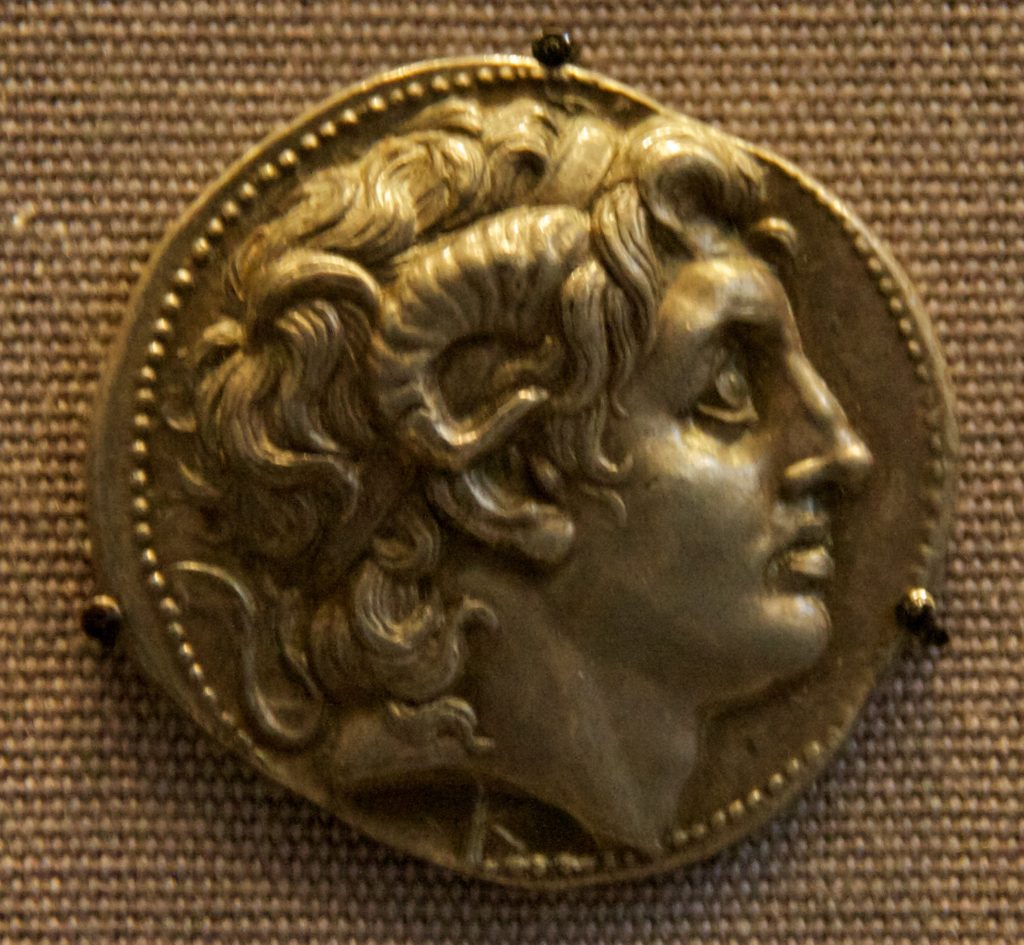[Greek] κέρας (keras), [Latin] cornu: horn, bony growth, hair of the head; Lk.1:69, Rev.5:6, Rev.9:13, Rev.12:3, Rev.13:1, Rev.17:1,3,7,12,16

Background Information:
Greco-Roman history: This term is commonly found in the Greek, Persian, and Babylonian world. This term can be found in a literal, figurative, and metaphorical sense. In addition to an animal’s horn, horns are placed on altar corners, used as weapons, and placed on headpieces. Horns depict the strength and might of the gods. Horns are a symbol of human strength and bravery. Homer’s Odyssey 19.210 states, “His eyes stood fixed between his eyelids as though they were a horn.” Alexander the Greek is depicted wearing horns on coins. Interestingly, Alexander is depicted in the Quran as Dhul-Qarnayn, meaning “The Two Horned One.”
Old Testament: This term, related to five Hebrew terms, means appearance (vision), agreement, corner, recess, horn, strength, musical instrument, peak, and ray of light. Horns are associated with animals, altars, tabernacles, physical power, pacts, and human arrogance. This term is also associated with the acts of pushing (goring), shooting, and shining. The horn relates to the power of salvation, the family line of David.
Daniel’s vision about horns:
“I looked up and saw standing by the river a ram with two great horns, the one larger and newer than the other.” Dan.8:3
The two-horned ram represent the kings of the Medes and Persians.
A he-goat with a prominent horn on its forehead suddenly came from the west across the whole earth without touching the ground.” Dan 8:5
This he-goat the king of the Greeks, Alexander the Great.
“But at the height of its strength the great horn was shattered, and in its place came up four others.” Dan. 8:8
Four kingdoms later come into existence.
“Out of one of them came a little horn which grew and grew to the south, the east, and the glorious land.” Dan.8:9
The Greek Antiochius IV ransacked the Temple in Jerusalem, leading to the Maccabean revolt.
New Testament: This term presents the horn as a source of authority (person), animal’s appendage, and power. Luke speaks of Jesus as the horn of salvation within the house of David. The Book of Revelations presents a lamb standing (as if slain) with seven horns and seven eyes. These horns represents the fullness of power. Seven represents perfection. In Revelations the dragon is presented as having ten horns. These ten horns represent the powers (spiritual and earthly) who opposed God’s people and church. Horns also are found on the corners of the altar. A voice comes from these four corners.
Scripture:
“He was raised up a horn for our salvation within the house of David his servant.” Lk.1:69
Jesus becomes a horn (authority figure) of salvation.
“Then the sixth angel blew his trumpet, and I heard a voice coming from the four horns of the gold altar before God.” Rev.9:13
This comes from the Old Testament instructions to place horns on the corners of an altar. These horns become projection points.
“Then I saw standing in the midst of the throne and the four living creatures and the elders, a Lamb that seemed to have been slain. He had seven horns and seven eyes; these are the seven spirits of God sent out into the whole world.” Rev.5:6
This Lamb has seven horns and seven eyes indicating the fullness of power and knowledge.
Conclusion:
Keratin, carat, carob, rhinoceros, corn, cornucopia
Horns have always been depicted as of courage and bravery. Alexander the Great always had a high opinion of himself. He wore horns in order to be seen as one held in high favor by the Egyptian god Ammon.
In the Old Testament culture, horns become associated with Yahweh’s authority. It was interesting to discover Daniel’s visions pertaining to horns (kings). This little horn leads to the circumstances for the Maccabeean revolt. It is significant to note that the Lamb has seven horns and eyes. This means the Lamb has obtained the fullness (perfection) of power and knowledge.
Keratin is the fibrous protein the makes up hair, feathers, hoofs, claws, and horns.
The carat became a standard of weight for commodities.
Carob beans (horn shaped) also had a uniformity (same size) in weight. From the 1570’s carobs were used for measuring the weight of diamonds.
A rhinoceros is a horn nosed creature.
Needless to say, this Greek term becomes the starting point for a “cornucopia” (horn of plenty) of modern day words!
